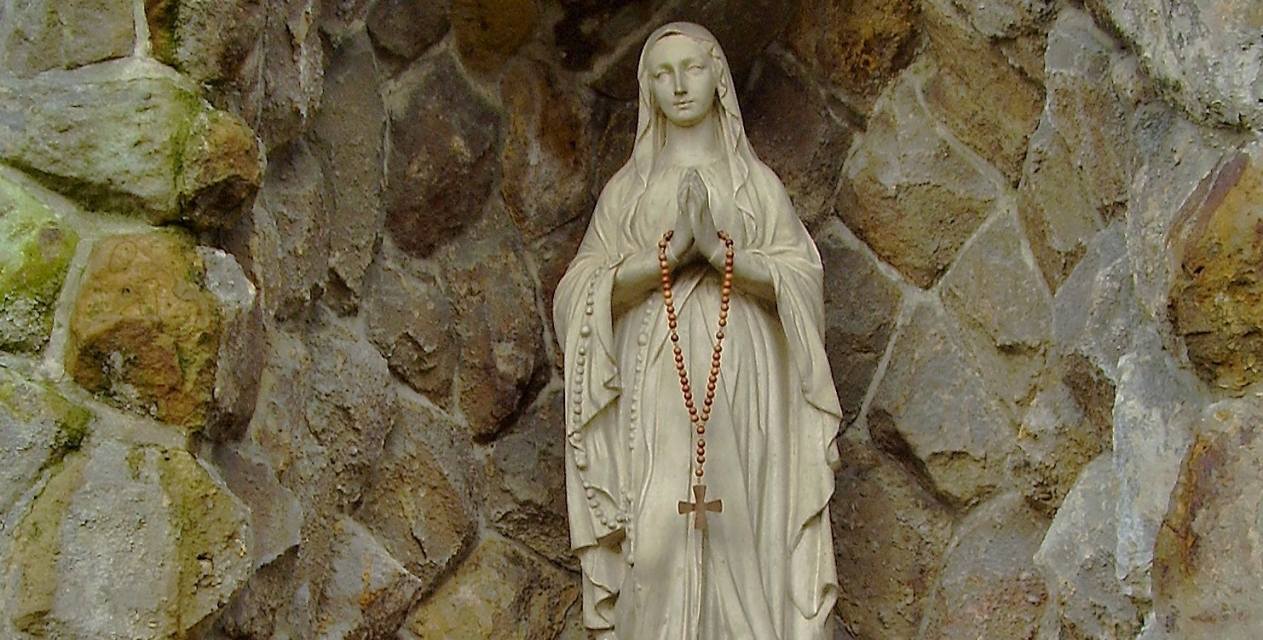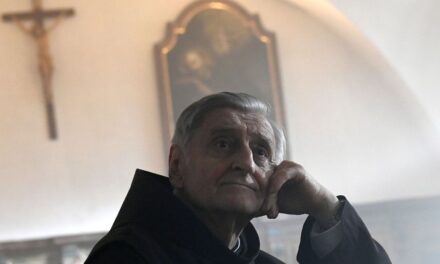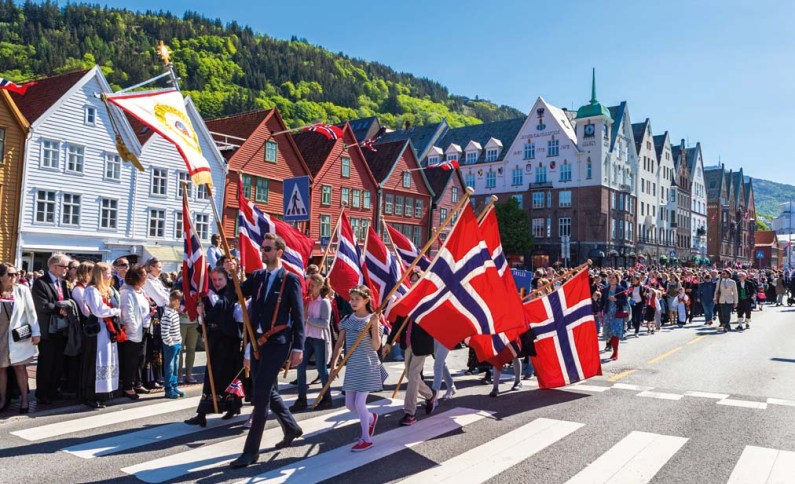Today, Christians celebrate the birthday of the Virgin Mary.
Although it is not known when the Virgin Mary was born, the Christian world still remembers her birth today. The Bible is rather tight-lipped about the mother of Jesus, telling only a few moments of her life, so it is silent about her birth and family. We can only know about this based on sacred traditions and some apocryphal documents.
We celebrate the birthday of the Virgin Mary today, because in the 5th century, near the Baths of Bethesda in Jerusalem, the church was consecrated on this day, which was built on the site of the presumed residence of St. Joachim and St. Anna, i.e. the parents of the Virgin Mary.
If tradition preserves the truth, the Virgin Mary was once born there, on the site of the church that still stands today.
The Bible tells very little about the life of Jesus' mother, and is completely silent about his birth and family. We gained our knowledge in this direction on the basis of sacred traditions and some apocryphal documents. From this we know that the Virgin Mary is the child of St. Joachim and St. Anne. However, we can gain some knowledge from the so-called Gospel of James, created in the 2nd century. According to the apocryphal, i.e. never canonized, Saint Anne's parents were called Stolanus and Emerencia and lived in Bethlehem. Anna became the wife of Joachim living in Nazareth. Both were from the tribe of Judah and the house of David. The apocryphal Gospel also tells that the parents of the Virgin Mary had been living together for twenty years, so they were no longer considered young, and they had not yet had a child. Anna and her husband prayed to the Lord independently for the blessing of children. On one occasion, they went up to Jerusalem to present a sacrifice on the feast of the dedication of the temple, but a priest named Ruben denied this, saying that God cannot take a gift from the hands of a sinful person (childlessness was also considered as such).
At this point, let's give the floor to James and see what he wrote in his apocryphal gospel:
"So Joachim was very sad, he did not even come into the presence of his wife, but went into the wilderness, pitched a tent there to fast for forty days and forty nights. "I will not leave here, neither for food nor for drink," he said to himself, "until my Lord and God look upon me." Prayer will be my food and drink. His wife, Anna, lamented her double grief, lamenting two bitter things: My widowhood will be bitter, my barrenness will be bitter! (…) Around nine o'clock he went down to his garden for a walk. A laurel tree appeared in front of him, he settled down under it, and after a short rest he began to pray to the Almighty: - God of my fathers, bless me and hear my plea, just as you blessed our foremother, Sara, because you gave her a son, Isaac! Anna fixed her eyes on the sky. But when he suddenly saw a bird's nest on the laurel tree, he complained to himself bitterly: "Oh, who gave birth to me, what kind of womb brought me into the world?" I was born a disgrace, the children of Israel consider me as such! My class has become a joke and a mockery, I have been kicked out of the church of my Lord and God! Oh my, where do I belong?
Then the angel of the Lord stood before him. "Anna, Anna," said the voice, "the Lord has heard your request." You will conceive and give birth, and one day the whole globe will be talking about your offspring!
"As the Lord God lives," Anna vowed, "whether I give birth to a boy or a girl, I will bring it to my Lord and God as a sacrificial gift!" The child will be at His service until the last day of his life!
Suddenly, two messengers arrived: "Look," they warned, "your husband Joachim is coming with his flocks!" In the meantime, the angel of the Lord came down to Joachim. "Joachim, Joachim," he said to him, "the Lord God has heard your request." Get home from here. Behold your wife, Anna, conceived in her womb.”
***
The Gospel of James also tells that Anna, as promised, conceived and gave birth to a little girl whom she named Mary. He kept his vow and offered Mary to the church when she was three years old. Joachim died not long after.
Although the Gospel of James was not included in the list of canonized books, the respect for the mother of the Virgin Mary, St. Anne, was decisive among Christians. That is why the legends about St. Anne have not been forgotten. In the East, churches were dedicated to him as early as the 6th century, but in the West, his cult only spread after the turn of the millennium. It was very popular among the Franciscans, Dominicans, Augustinians and Carmelites. The religious controversies following Luther's actions also contributed to the further strengthening of her cult, since the more the reformers attacked her, the more the popes supported the religious devotion to St. Anne.
However, there is another interpretation of today's holiday, September 8, which in Latin is called Nativitas Beatae Mariae Virginis, and in the Eastern liturgy it is called the birth of the Most Holy Mother of God, which is December 8, and through that the Advent period and Christmas points towards.
This article of faith states that the Virgin Mary was already conceived in the womb of her mother, St. Anna, without blemish, that is, free from inherited sin. This is a privilege of God, which the church recognizes only in the case of the Virgin Mary, and it is celebrated on December 8 as the anteroom of the Christmas round.
The idea of the Immaculate Conception of Mary began to be celebrated in the East in the 8th century, but in the West a little later, in the 9th century. In the church calendar with the date of December 8, IV. It was adopted by Pope Sixtus in 1476.
However, despite its ancient history, the dogma of the Immaculate Conception of Mary was born rather late, only in 1854. On December 8, it was announced with these words by IX. Pope Piusz: "We declare, confirm and regard as a divine revelation the teaching that from the first moment of her conception, the Blessed Virgin Mary was preserved unharmed from the taint of original sin by the special grace and protection of Almighty God, by virtue of the merits of the Savior of mankind, Jesus Christ."
It is no coincidence that in the prayer book Our Blessed Virgin Mary, small officium for conception without a macula, published in Bratislava in 1675, you can read this line of verse: "Maria's soul shines / When her body is conceived / As she is covered with red hair / The light of the sun shines .”
However, despite its ancient history, the dogma of the Immaculate Conception of Mary was born rather late, only in 1854. On December 8, it was announced with these words by IX. Pope Piusz: "We declare, confirm and regard as a divine revelation the teaching that from the first moment of her conception, the Blessed Virgin Mary was preserved unharmed from the taint of original sin by the special grace and protection of Almighty God, by virtue of the merits of the Savior of mankind, Jesus Christ."
This is how the Christmas celebrations of Mary's Immaculate Conception in December, her coming into the world in September and the birth of Jesus Christ are connected and form an organic unity.
Few people know that the first chapel and church in the world to be linked to the dogma of the Immaculate Conception are both located in Hungary.
Even before the proclamation of the dogma, on June 29, 1847, a lady appeared in a dream to Ferenc Wendler, a farmer from Budaörs, who introduced herself as "I am the Immaculate Conception." The priest from Budaörs wrote this in a letter to the pope, who twelve days after the proclamation of the dogma of the Immaculate Conception gave permission for a chapel to be built in memory of this apparition. The Holy Father even sent a statue of Mary. God's tiny abode was built in 1855 on Kő-hegy in Budaörs. As for the church, you don't have to go far from the chapel to find it, just go to Fótra.
The church of the settlement on the other side of the Danube was built by the landowner of the area, count István Károlyi. The foundations were already excavated in 1845, but construction was suspended between 1848 and 1851, because the count received a two-year prison sentence for his participation in the War of Independence.
The church, built on the basis of Miklós Ybl's plans, was completed in 1854, when the dogma was proclaimed, and was named after the Immaculate Conception. That's how he became world number one.
St. II. Pope John Paul called Mary the Mother of Hope.
In his apostolic exhortation at the beginning of Ecclesia in Europa, published in 2003, the Bishop of Rome wrote: "Mary, give us Jesus! Help us to follow him and love him! He is the hope of the Church, Europe and humanity."
And on another occasion, the holy father taught that God descended in his own person into the womb of Mary, as in the most holy temple, to take on a human form and dwell in a visible form, graciously among people. Today we offer our humble prayer for the world and the Church to the child Mary".
Featured image: Virgin Mary of Lourdes statue, Balatonszentgyörgy / csodalatosbalaton.hu













